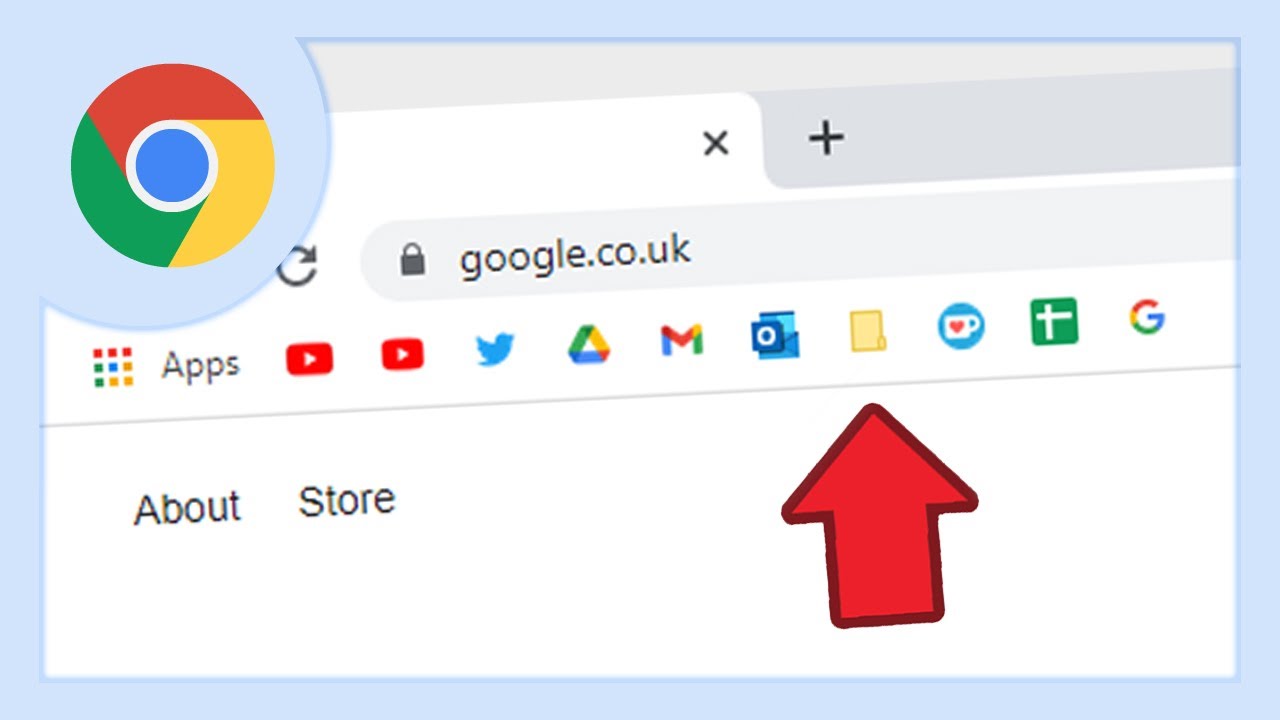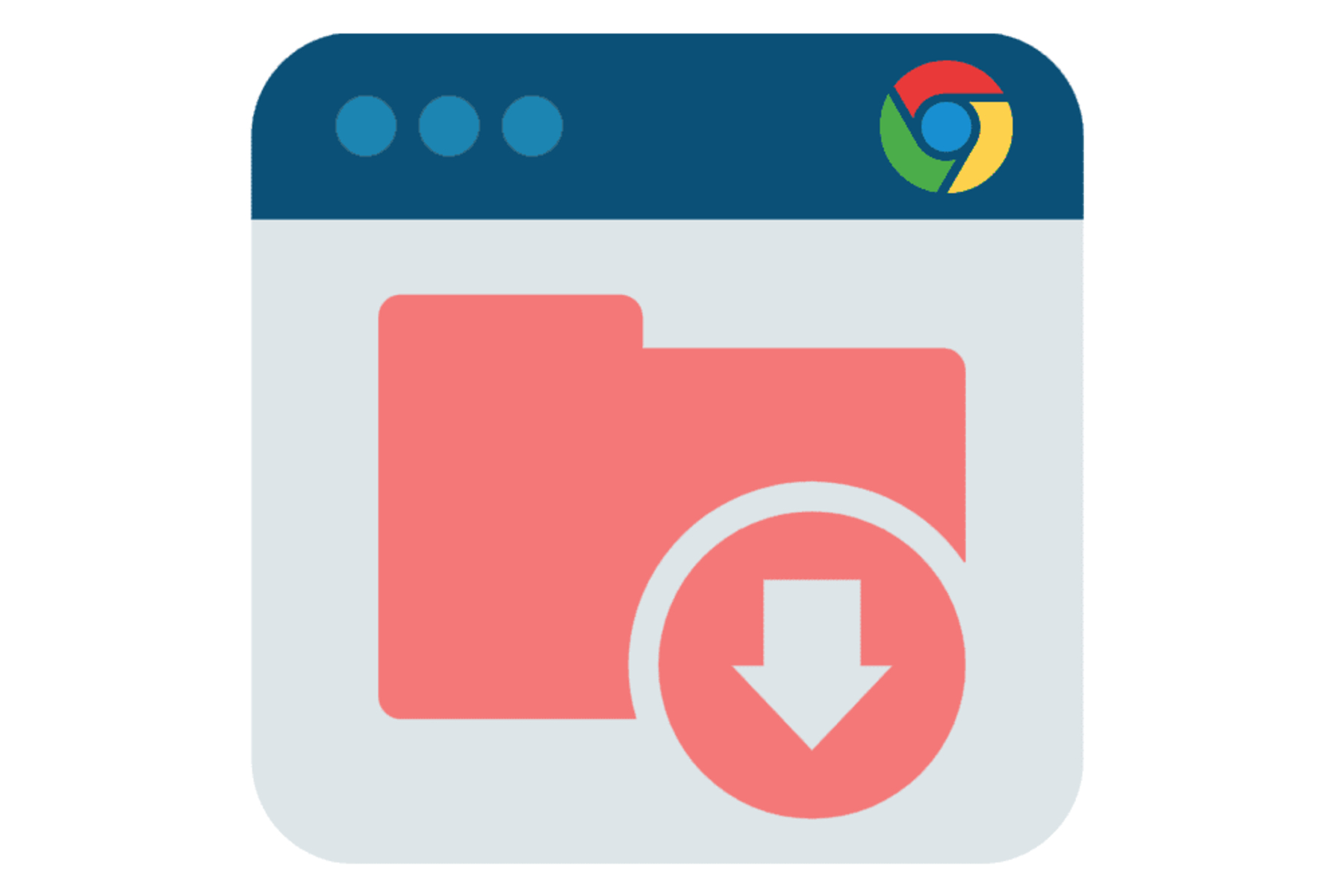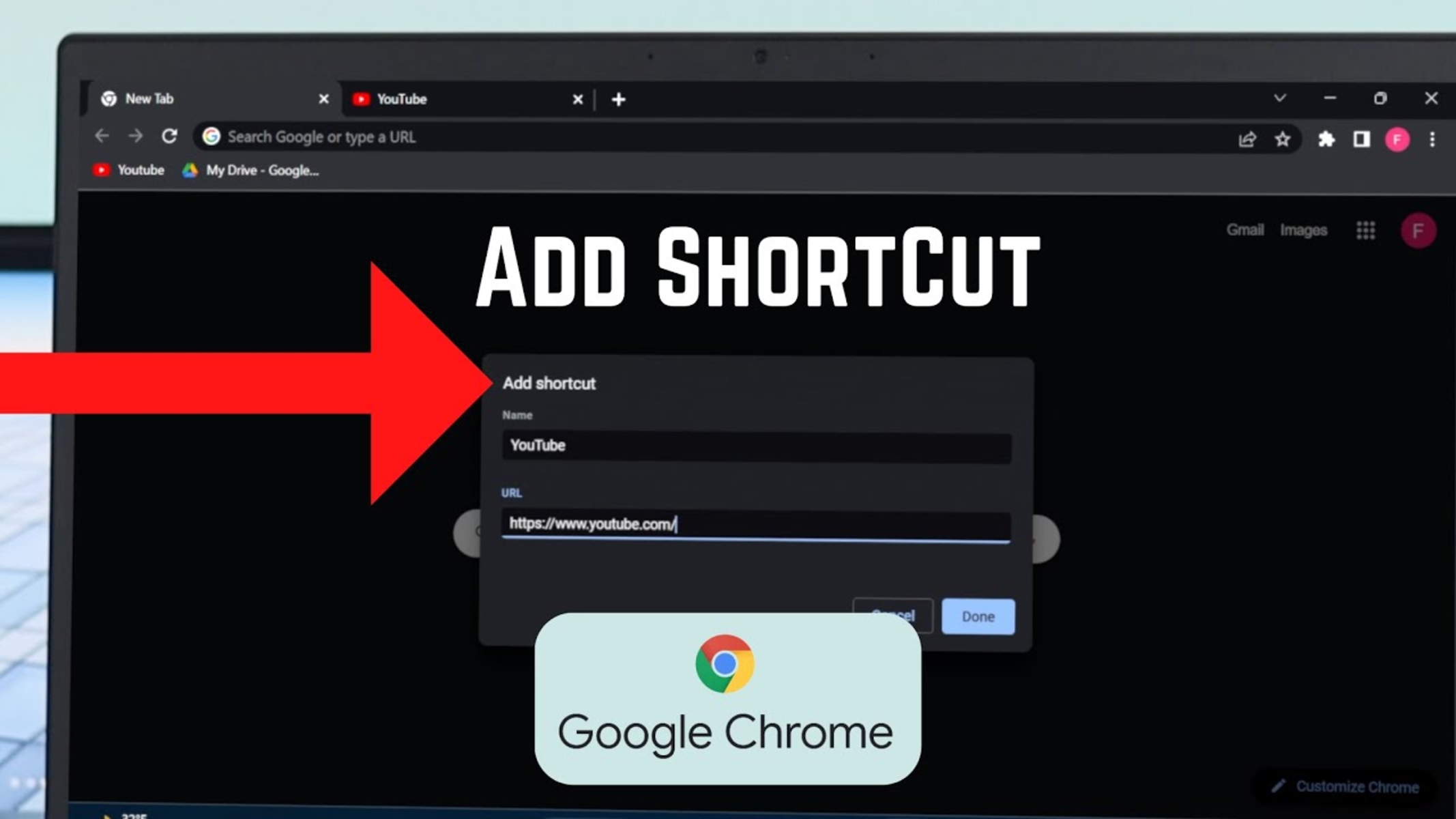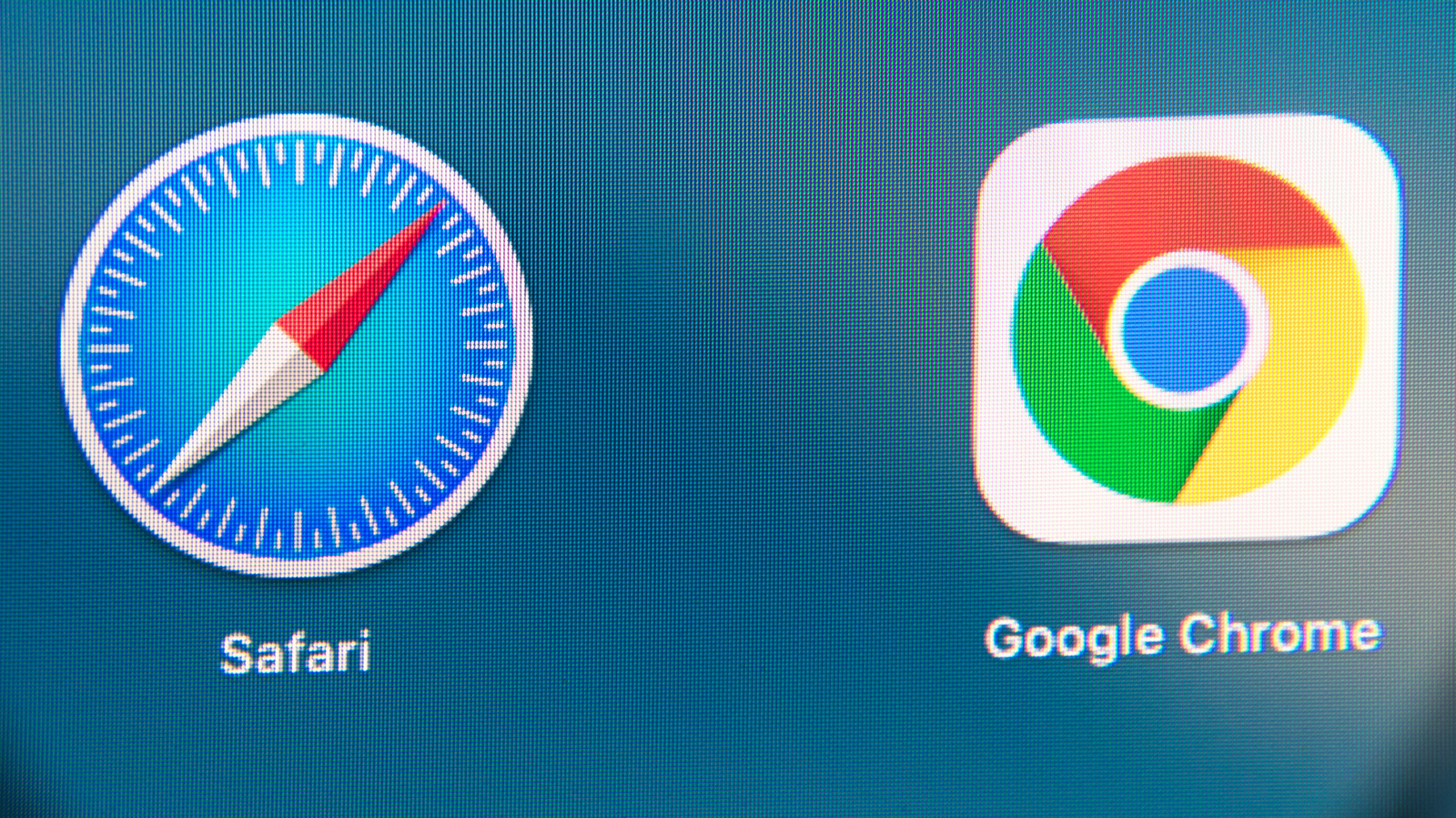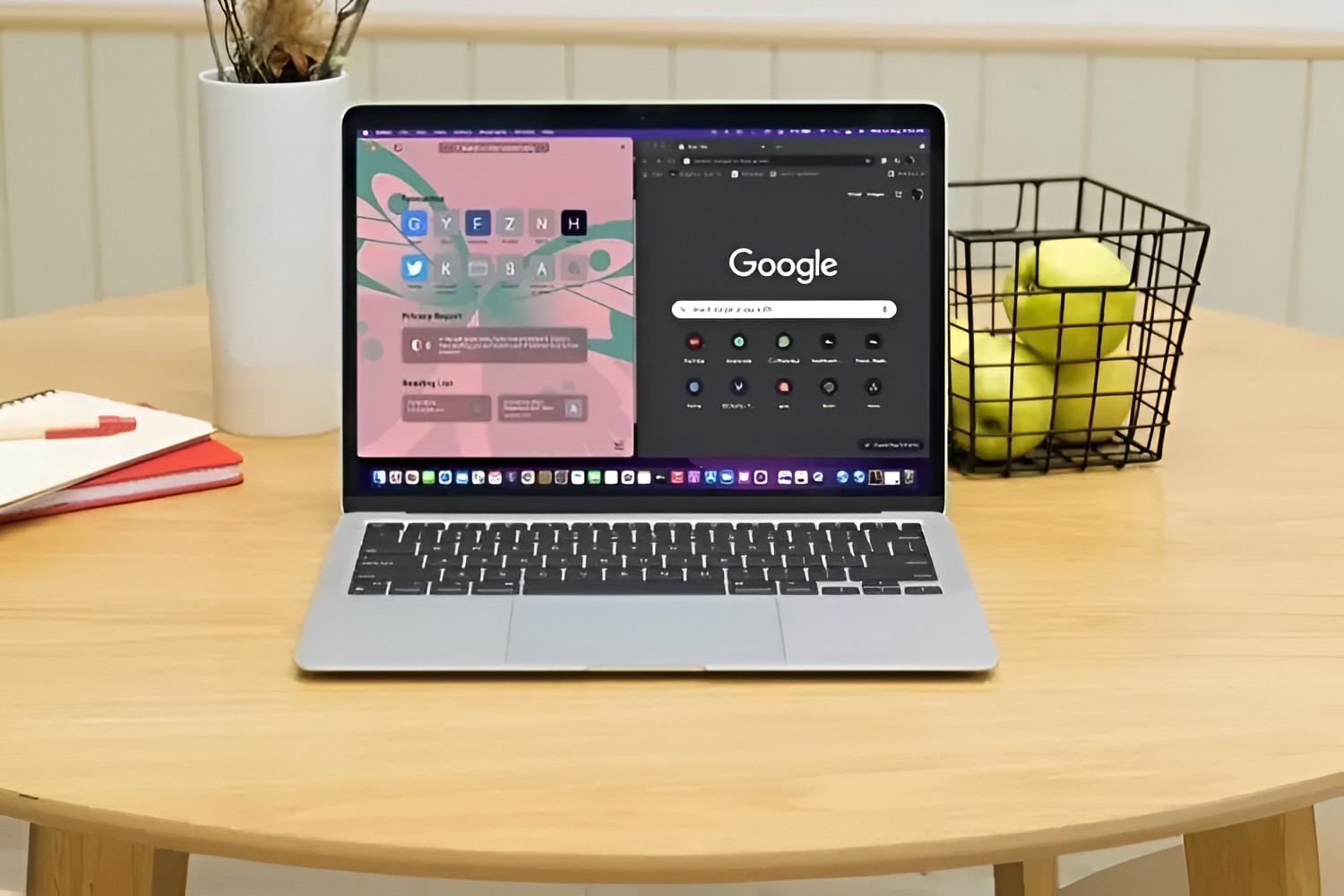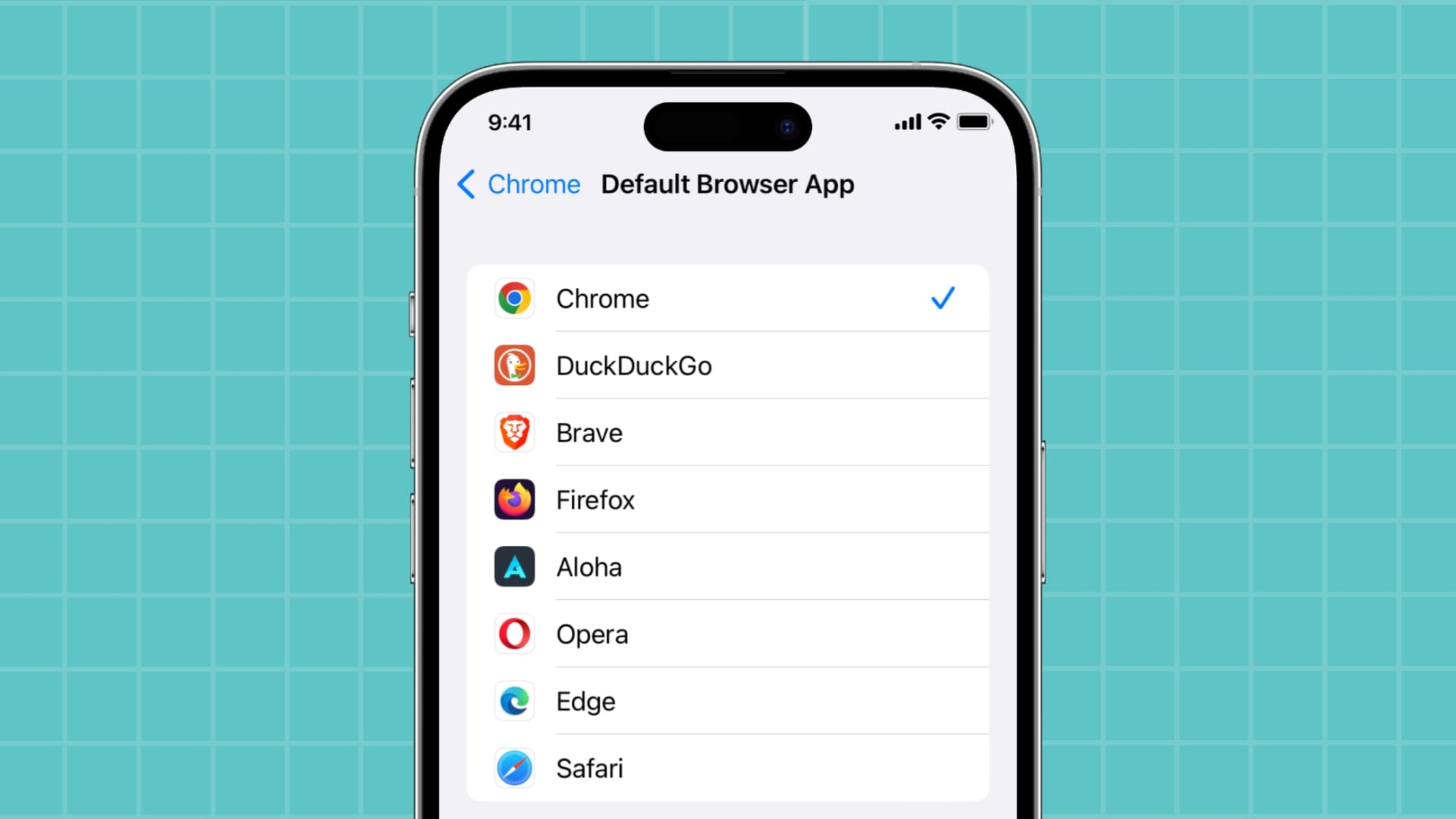Introduction
Adding bookmarks to your web browser is a convenient way to save and organize your favorite websites for quick and easy access. Whether you want to bookmark a frequently visited site, a valuable resource, or an entertaining page, Google Chrome provides a user-friendly method to accomplish this task. By following a few simple steps, you can efficiently manage your bookmarks and streamline your browsing experience.
In this article, we will explore the process of adding a bookmark on Google Chrome. You will learn how to mark a webpage for future reference, edit the bookmark details, and access your saved bookmarks for seamless navigation. Whether you're a seasoned Chrome user or just getting started with this popular web browser, mastering the art of bookmarking will undoubtedly enhance your online productivity and enjoyment.
So, let's dive into the world of bookmarks and discover how to make the most of this feature in Google Chrome. Whether you're a student, professional, or avid internet surfer, the ability to efficiently manage your bookmarks can significantly improve your online experience. Let's embark on this journey to unlock the full potential of bookmarking in Google Chrome.
Step 1: Open Google Chrome
To begin the process of adding a bookmark in Google Chrome, you first need to open the web browser on your device. Whether you're using a desktop computer, laptop, tablet, or smartphone, launching Google Chrome is the initial step towards organizing your favorite websites for quick access.
If you're using a Windows computer, you can open Google Chrome by clicking on the Chrome icon located on your desktop or by searching for "Google Chrome" in the Windows Start menu. Once you locate the Chrome icon, simply double-click on it to launch the browser.
For Mac users, opening Google Chrome is just as straightforward. You can find the Chrome icon in your Applications folder or on the Dock. Click on the icon to open the browser and proceed with the bookmarking process.
If you prefer to use Google Chrome on your mobile device, such as an Android smartphone or an iPhone, you can access the browser by tapping on the Chrome app icon from your home screen or the app drawer. Once the browser is open, you're ready to move on to the next step of adding a bookmark.
By ensuring that Google Chrome is up and running on your device, you're poised to take full advantage of its bookmarking feature. Whether you're a casual internet user or a dedicated researcher, the ability to easily save and organize your favorite websites can greatly enhance your browsing experience. With Google Chrome at your fingertips, you're ready to embark on the journey of bookmarking your preferred webpages for future reference and seamless navigation.
Step 2: Navigate to the Website
Once Google Chrome is open on your device, the next step is to navigate to the website that you want to bookmark. Whether it's a frequently visited site, a valuable resource, or an entertaining page, accessing the specific webpage is essential before adding it to your bookmarks.
To navigate to a website in Google Chrome, you can simply type the website's URL or keywords into the address bar, also known as the omnibox. As you start typing, Google Chrome's intuitive autofill feature may display suggestions based on your browsing history and bookmarks, making it easier to access the desired site quickly.
Alternatively, if you have the website's URL saved elsewhere, such as in a document or an email, you can copy and paste the URL directly into the address bar. Pressing "Enter" or tapping the "Go" button on your device will then take you to the specific webpage.
Another convenient method to navigate to a website is by utilizing your bookmarks or the browsing history. If the website you wish to bookmark is one that you've visited recently, you can access it by clicking on the three-dot menu at the top-right corner of the browser window, selecting "Bookmarks," and then choosing the site from the list of recently visited pages.
For websites that you've bookmarked in the past, you can access them by clicking on the three-dot menu, selecting "Bookmarks," and then choosing the specific bookmarked site from the list.
Whether you're typing the URL directly, using autofill suggestions, or accessing the website from your bookmarks or browsing history, the goal is to reach the webpage that you intend to bookmark. By navigating to the specific site, you're one step closer to adding it to your collection of bookmarks in Google Chrome.
Navigating to the website of your choice is a crucial part of the bookmarking process, as it sets the stage for saving the webpage for future reference. With Google Chrome's user-friendly interface and efficient navigation tools, accessing your favorite websites is a seamless and straightforward task, allowing you to effortlessly proceed with the bookmarking process.
Step 3: Click on the Star Icon
After navigating to the website that you want to bookmark, the next step is to click on the star icon located in the address bar of Google Chrome. This star icon serves as the gateway to adding the current webpage to your bookmarks, allowing you to easily revisit it in the future with just a few clicks.
When you click on the star icon, a small window or pop-up will appear, prompting you to confirm the addition of the webpage to your bookmarks. This window typically displays the URL of the webpage, allowing you to review and verify the details before finalizing the bookmarking process.
By clicking on the star icon, you are essentially signaling to Google Chrome that the current webpage holds significance to you and should be saved for future reference. This simple yet powerful action enables you to curate a personalized collection of bookmarks, tailored to your browsing preferences and interests.
The star icon in Google Chrome serves as a visual cue, making it easy to identify and access the bookmarking feature whenever you encounter a webpage worth saving. Its intuitive placement within the address bar ensures that adding a bookmark is a seamless and immediate process, empowering you to efficiently capture valuable online content without interrupting your browsing flow.
By clicking on the star icon, you are taking control of your browsing experience, creating a curated library of websites that hold relevance and importance to you. Whether it's a research article, a favorite blog, a useful tool, or an inspiring webpage, the star icon in Google Chrome empowers you to capture and preserve these online discoveries with ease.
In essence, clicking on the star icon signifies the beginning of a personalized collection of bookmarks, each representing a digital gateway to valuable online content. This simple yet impactful action embodies the essence of efficient bookmarking, allowing you to effortlessly build a repository of webpages that resonate with your interests and needs.
With the click of a star, you are not just saving a webpage; you are capturing a piece of the internet that holds significance to you, ensuring that it remains easily accessible whenever you need it. This seamless process exemplifies the user-centric design of Google Chrome, empowering you to curate a personalized browsing experience with just a simple click on the star icon.
Step 4: Edit the Bookmark (Optional)
After adding a bookmark in Google Chrome, you have the option to edit and customize its details to better suit your preferences and organizational needs. This optional step allows you to refine the bookmark's title, assign it to a specific folder, and add relevant notes, ensuring that your collection of bookmarks remains well-organized and easily navigable.
To edit a bookmark, you can start by accessing your bookmarks within Google Chrome. By clicking on the three-dot menu at the top-right corner of the browser window and selecting "Bookmarks," you can navigate to the "Bookmark Manager." Alternatively, you can use the keyboard shortcut "Ctrl + Shift + O" on Windows or "Command + Option + B" on Mac to access the Bookmark Manager directly.
Once in the Bookmark Manager, you will see a list of all your bookmarks, including the most recent addition. By right-clicking on the specific bookmark that you wish to edit, a contextual menu will appear, offering various options for customization. Selecting "Edit" from this menu will allow you to modify the bookmark's title and URL, providing the flexibility to tailor the details to your liking.
Furthermore, you can categorize the bookmark by assigning it to a specific folder within your bookmarks hierarchy. This feature is particularly useful for organizing your bookmarks based on categories such as work, research, leisure, or any custom classifications that align with your browsing habits and interests. By assigning the bookmark to a relevant folder, you can streamline your bookmark collection and quickly locate specific webpages when needed.
In addition to modifying the title and folder assignment, Google Chrome allows you to add notes to your bookmarks, providing a space for personalized annotations or reminders related to the saved webpage. This feature is invaluable for jotting down key points, highlighting important sections of the webpage, or simply adding context to the bookmarked content. By incorporating notes, you can enhance the utility of your bookmarks and create a more enriched browsing experience.
By offering the option to edit and customize bookmarks, Google Chrome empowers users to curate a personalized collection of saved webpages that align with their individual preferences and organizational strategies. This flexibility ensures that your bookmarks not only serve as convenient shortcuts to favorite websites but also as curated resources tailored to your specific needs and interests.
In essence, the ability to edit bookmarks in Google Chrome reflects the browser's commitment to user-centric customization, allowing individuals to shape their browsing environment according to their unique requirements. Whether it's refining the details of a bookmark, organizing it into a designated folder, or adding personal notes, the editing feature elevates the bookmarking experience, transforming it into a dynamic and personalized aspect of your online journey.
Step 5: Access Bookmarks
Accessing your saved bookmarks in Google Chrome is a straightforward process that allows you to effortlessly revisit your favorite websites and valuable resources. Whether you've accumulated a diverse collection of bookmarks over time or recently added a few new ones, the ability to access and manage your bookmarks is essential for optimizing your browsing experience.
To access your bookmarks in Google Chrome, you can utilize the browser's built-in Bookmarks Manager. This feature provides a centralized hub for organizing and navigating through your bookmarked webpages, offering a seamless way to locate specific sites and maintain a well-curated collection.
One of the simplest methods to access your bookmarks is by clicking on the three-dot menu at the top-right corner of the browser window. From the dropdown menu, select "Bookmarks" to reveal a list of options, including "Bookmark Manager." Clicking on "Bookmark Manager" will open a new tab dedicated to managing your bookmarks, displaying a comprehensive view of all your saved webpages.
Alternatively, you can access the Bookmark Manager directly by using the keyboard shortcut "Ctrl + Shift + O" on Windows or "Command + Option + B" on Mac. This quick shortcut provides instant access to your bookmarks, allowing you to efficiently navigate through your collection without interrupting your browsing flow.
Once in the Bookmark Manager, you will see a list of your bookmarks organized in a user-friendly interface. The left-hand panel displays your bookmark folders, enabling you to categorize and group your bookmarks based on specific themes, topics, or purposes. This hierarchical structure offers a convenient way to organize and access your bookmarks, ensuring that you can quickly locate relevant webpages whenever needed.
Furthermore, the Bookmark Manager allows you to perform various actions on your bookmarks, such as editing their details, rearranging them within folders, and deleting or moving them to different categories. This level of control empowers you to maintain a well-organized and personalized collection of bookmarks, tailored to your browsing habits and preferences.
By accessing your bookmarks in Google Chrome, you gain the ability to seamlessly revisit your favorite websites, valuable resources, and saved webpages. This streamlined process enhances your browsing efficiency, enabling you to leverage your curated collection of bookmarks for quick access to relevant online content.
In essence, the ability to access and manage bookmarks in Google Chrome reflects the browser's commitment to empowering users with efficient tools for organizing and navigating their online resources. Whether you're a casual internet user, a dedicated researcher, or a professional seeking streamlined access to essential webpages, the bookmark management features in Google Chrome elevate your browsing experience, ensuring that your favorite online destinations are just a click away.
Conclusion
In conclusion, mastering the art of adding and managing bookmarks in Google Chrome is a valuable skill that can significantly enhance your browsing experience. By following the simple yet impactful steps outlined in this guide, you have gained the ability to curate a personalized collection of webpages, ensuring quick and convenient access to your favorite websites, valuable resources, and essential online content.
The process begins with opening Google Chrome on your device, setting the stage for efficient bookmarking and seamless navigation. Navigating to the specific website of your choice is the next crucial step, allowing you to pinpoint the exact webpage that holds significance to you. Clicking on the star icon in the address bar signifies the initiation of the bookmarking process, enabling you to capture the webpage with a simple yet powerful action.
Furthermore, the option to edit and customize your bookmarks provides a level of personalization and organization that aligns with your unique browsing habits and interests. Whether it's refining the bookmark's title, assigning it to a specific folder, or adding personal notes, the ability to tailor your bookmarks ensures that they serve as curated resources tailored to your specific needs.
Accessing your saved bookmarks through Google Chrome's intuitive Bookmark Manager offers a seamless way to revisit your favorite webpages and manage your collection. The hierarchical structure of bookmark folders allows for efficient organization, ensuring that you can quickly locate relevant webpages whenever needed. This level of control empowers you to maintain a well-organized and personalized collection of bookmarks, tailored to your browsing habits and preferences.
In essence, the process of adding and managing bookmarks in Google Chrome embodies the browser's commitment to user-centric customization and efficient navigation. Whether you're a student, professional, or avid internet surfer, the ability to efficiently manage your bookmarks can significantly improve your online productivity and enjoyment.
By mastering the art of bookmarking in Google Chrome, you have unlocked the potential to curate a personalized browsing experience, ensuring that your favorite online destinations are just a click away. Embracing the convenience and flexibility of bookmarking empowers you to navigate the vast landscape of the internet with ease, ensuring that your most cherished webpages remain readily accessible whenever you need them.







